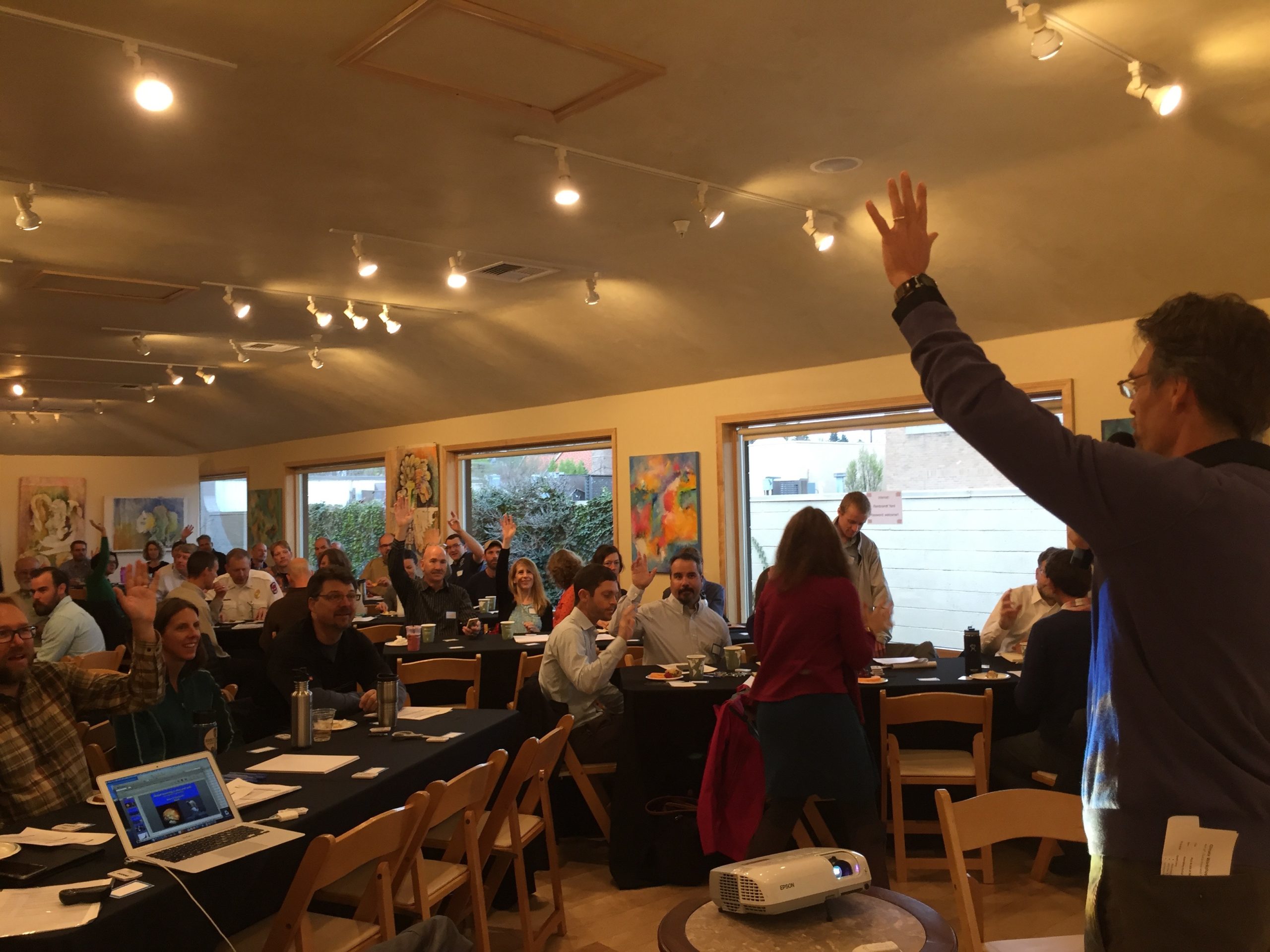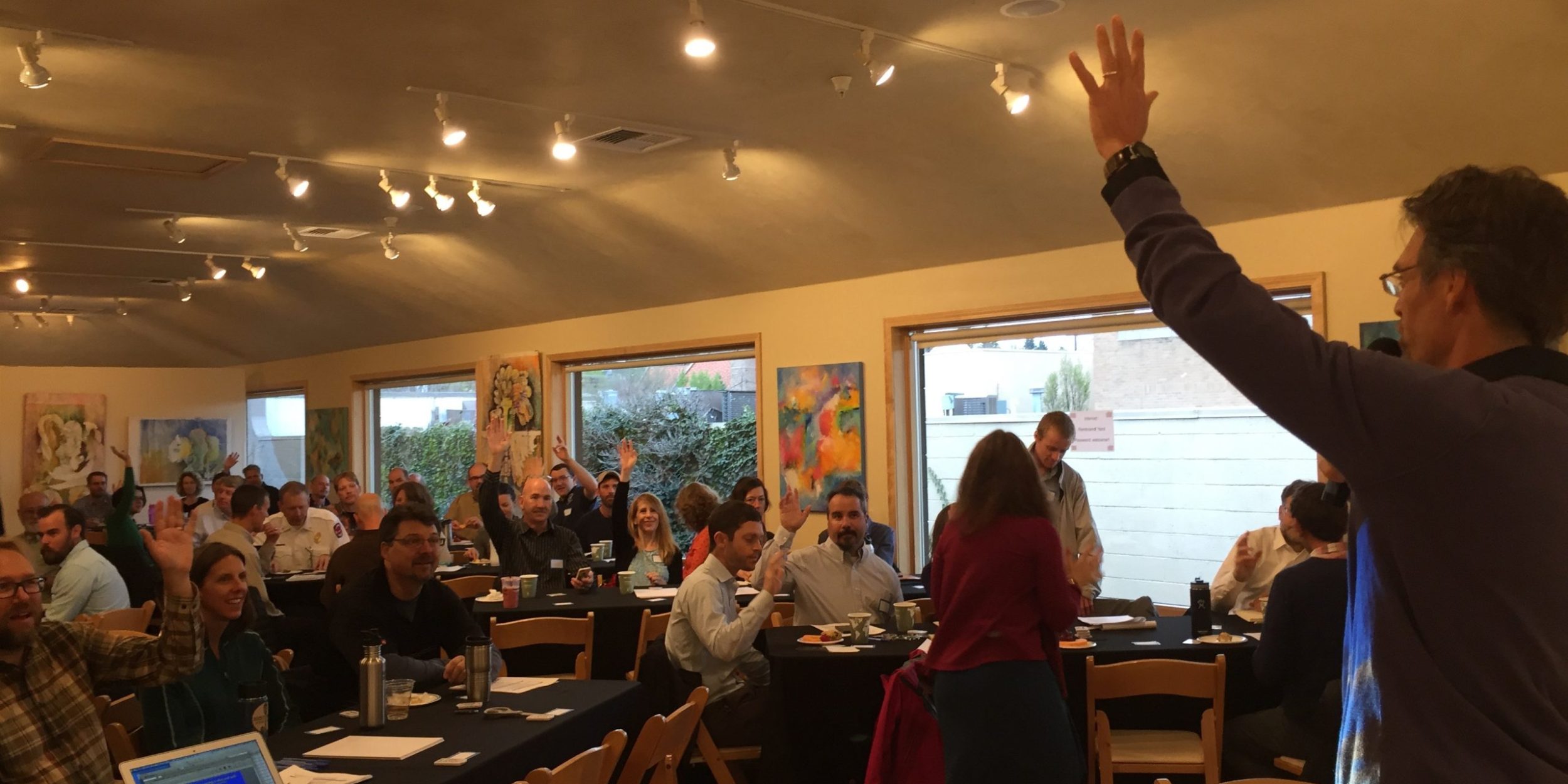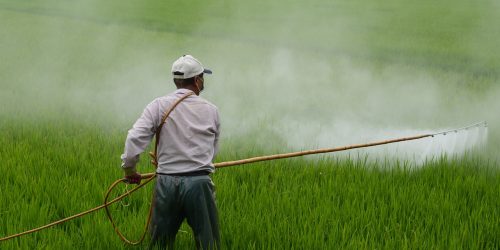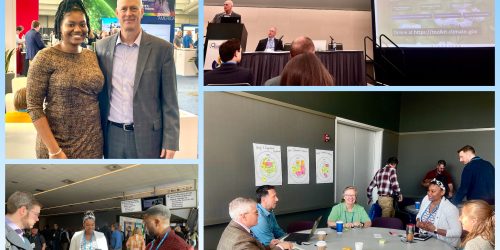

NOAA’s Sectoral Applications Research Program (SARP) funded a research project that pilots a new approach to identifying extreme event thresholds in four communities in South-Central U.S.: Boulder, CO; Las Cruces, NM; Miami, OK; and San Angelo, TX. The project involved a diverse set of participants representing city departments, local organizations, and state and/or federal agencies. This was a joint project led by Adaptation International and involving Southern Climate Impacts Planning Program (A NOAA RISA team), Climate Impact Assessment for the Southwest (A NOAA RISA team), the Institute for Social and Environmental Transition, and ATMOS Research.
When does weather go from being a nuisance to a problem? Answering this question and identifying and understanding critical thresholds for extreme weather events is key for communities to develop effective adaptation strategies. This project used a participatory process to develop locally-relevant climate projections based on thresholds for extreme weather events the communities identified as most important. Through a series of workshops, meetings, and conference calls, participants also developed climate change adaptation and resilience actions designed to address these extreme weather concerns.
Conducting this kind of location-specific project with extensive community engagement is valuable because the thresholds participants identified helped make the climate projections, which were estimated through the end of the century, more relevant to their local experiences. The researchers found climate change and resilience discussions could be challenging because many participants were not prepared to think beyond the daily-to-weekly time scales since most of their jobs are associated with shorter timeframes.
An important aspect of this project was the use of seed money for each pilot community to identify and complete a resilience action project. These projects were developed after sharing and discussing customized climate projections with the community. The project leads found that communities not only chose projects that fit in with on-going efforts, which were more likely to succeed, but also helped build more than one aspect of resilience. For example, participants in the San Angelo, TX decided to design and install a rainwater harvesting system in a local park, which was already of interest to the City Council. This resilience action will help the community address both extreme precipitation events and drought as well as save money.
Ultimately, this project demonstrated that the co-production of actionable science between decision makers and scientists, based on community-identified extreme event thresholds, may help bridge the gap between climate science and efforts to build resilience at the community level.
Read the case studies:
Boulder, CO | Las Cruces, NM | Miami, OK | San Angelo, TX
For more information:
Visit http://adaptationinternational.com/projects/ or
Contact Sascha Petersen, sascha@adaptationinternational.com










